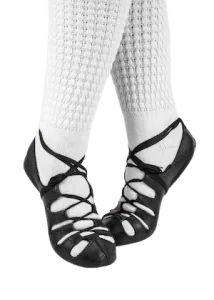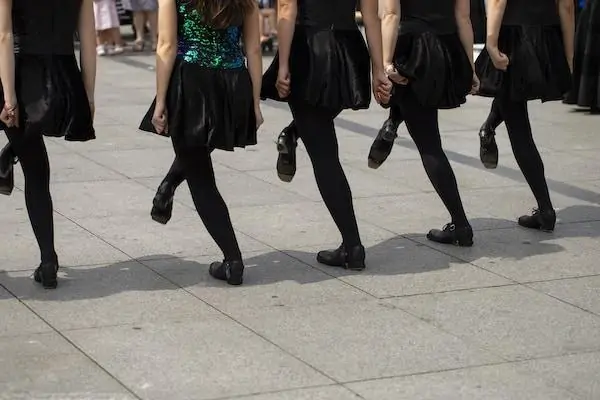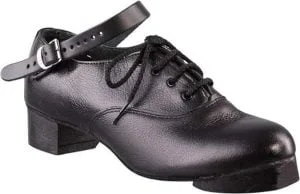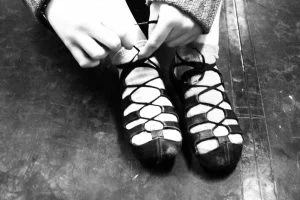For those new to Irish dancing, we thought it would be good to start by letting you know about some of the history of Irish dance. Irish dance is a traditional dance form that originated in Ireland and has a rich history dating back centuries. Characterized by its intricate footwork, it’s often performed in a fast and rhythmic manner. Irish dance is typically performed solo, in pairs, or in groups, and in our opinion, is best appreciated when accompanied by live music played on traditional Irish instruments such as the fiddle, bodhran, and accordion. Irish dance has gained worldwide interest in recent years, thanks partly to shows like Riverdance and Lord of the Dance. These shows played an instrumental role in bringing the dance form to a wider audience. Today, Irish dance is enjoyed by people of all ages and backgrounds and is an integral part of Irish culture and heritage.

Table of Contents
Toggle
Why is it important to know about the history of Irish Dance?
Understanding the history of Irish dance is important for several reasons. Firstly, it allows us to appreciate this dance form’s cultural and historical significance, which has played an important role in Irish culture for centuries. By learning about the early origins and development of Irish dance, we gain a deeper understanding of the cultural and social context in which it was created and performed. Additionally, by learning how the techniques and styles have developed over time, we can better appreciate the intricate footwork and rhythmic movements characteristic of Irish dance. Irish dance has undergone many changes and innovations over the years, from its early origins as a form of social dance to its development into a competitive and performance-based art form.
A brief overview of the History of Irish Dance
The early history of Irish dance can be traced back to times when the ancient Druids, the priestly class of ancient Celtic society, performed ritual dances to celebrate important events and mark the changing of seasons. The earliest records of Irish dance, however, date back to the medieval period when the Irish began to develop their unique dance forms. During this time, Irish dance was largely a social activity that people of all ages and backgrounds enjoyed. It was often performed at social gatherings such as weddings and festivals and was characterized by lively footwork and rhythmic movements. However, the role of the church in medieval Ireland meant that many aspects of Irish culture, including dance, were discouraged and even suppressed. Despite this, Irish dance continued to evolve and develop, with regional styles emerging in different parts of Ireland. One of the most distinctive of these regional styles was the “sean-nós” style of dancing, which originated in the western part of Ireland and is still performed today.
Development of Irish dance in the 18th and 19th centuries
The 18th and 19th centuries saw significant developments in Irish dance as it evolved from a purely social activity to a more formal and structured art form. One of the key factors in this development was the emergence of dancing masters, who traveled from town to town, teaching dance to the local people. These dancing masters helped standardize and codify Irish dance, developing a set of formal steps and styles to be taught and learned. They also introduced the concept of dance competitions, encouraging dancers to improve their skills and techniques to win prizes and recognition. During this period, several new styles of Irish dance emerged. These include the jig, the reel, and the hornpipe. Each style had its own distinctive rhythm and footwork, which became an important part of the Irish dance repertoire. Another important development during the 18th and 19th centuries was the role of Irish dance in the theater. Irish dance became a popular form of entertainment in both Ireland and England, and many dance companies began to tour extensively, performing in theaters and other venues.
20th-century revival of Irish dance
The 20th century saw a remarkable revival of Irish dance. It was fueled in part by a renewed interest in Irish culture and heritage. One of the key drivers of this revival was the development of Irish dance competitions, which provided a platform for dancers to showcase their skills and compete against each other.
The first Irish dance competition was held in Dublin in 1897. These competitions grew in popularity and prestige. Today, Irish dance competitions are held worldwide, with dancers competing for prizes and recognition.
The most prestigious of these competitions is the World Irish Dancing Championships, which has been held annually since 1970. This competition attracts dancers from all over the world and is considered the pinnacle of achievement in Irish dance.
Another important factor in the 20th-century revival of Irish dance was its increased visibility due to advances in technology, like TV and video recording. In the 1990s, shows like Riverdance and Lord of the Dance helped to popularize Irish dance, showcasing its unique style and rhythm to a wider audience.
Since then, Irish dance has continued to feature prominently in popular culture, with numerous television shows, movies, and musicals incorporating Irish dance into their performances. This has helped to raise the profile of Irish dance and increase its appeal to a wider audience.
Today, Irish dance continues to be a popular and thriving art form, with countless numbers of dance schools and several organizations dedicated to its preservation and promotion.
Contemporary Irish Dance
Contemporary Irish dance has evolved significantly over the past few decades, with new styles and techniques emerging and an increased focus on innovation and creativity. Irish dance is currently in a strong and healthy state, with numerous dance schools, organizations, and competitions dedicated to its promotion and preservation. Many dancers are now pursuing careers in Irish dance, with opportunities available to perform in shows and worldwide tours. One of the most significant developments in recent years has been the growing popularity of contemporary Irish dance, which incorporates elements of other dance styles and techniques to create a more innovative and dynamic form of Irish dance.
Different Styles of Irish Dance
There are now many different styles of Irish dance. Each with its own distinctive rhythm, footwork, and techniques. Traditional Irish dance styles include the jig, the reel, and the hornpipe, while more contemporary styles may incorporate elements of hip-hop, ballet, or modern dance. Some competitions have a section dedicated to “Freestyle” performances. The performances are less traditional and allow for modern influences, but must also contain a significant Irish element. Irish step dancing, which is characterized by its quick and precise footwork, remains one of the most popular styles of Irish dance. However, other styles, such as sean-nós dancing, which emphasizes improvisation and individual expression, are also gaining in popularity.
The Role of Technology in the Development of Irish Dance
Technology has played a significant role in the development of Irish dance, with new tools and resources helping to enhance the training and performance of dancers. Video technology has made it easier for dancers to record and analyze their performances. Online platforms and social media have made it easier for dancers to connect and share their work. In fact, there are some services where you can connect and get live instruction from current and former World Champions! In addition, technology has also enabled the development of new dance styles and techniques, with dancers and choreographers experimenting with new music, costumes, and stage designs to create a more dynamic and engaging form of Irish dance.
The Future of Irish Dance
The future of Irish dance looks bright, with new generations of dancers continuing to push the boundaries of the art form and explore new possibilities. There is a growing interest in contemporary Irish dance, which is attracting a wider and more diverse audience, and new technology and resources are helping to support the development and evolution of Irish dance. As Irish dance continues to evolve and adapt, it will remain an important part of Ireland’s cultural heritage and a source of pride and inspiration for dancers and audiences worldwide.
Conclusion
In conclusion, Irish dance is an art form that has a rich and diverse history, evolving over centuries to become the vibrant and dynamic dance style we know today. From its origins in rural Ireland to its global popularity, Irish dance has undergone many changes and transformations, with new styles and techniques emerging to keep the art form fresh and exciting. Understanding the history of Irish dance is important because it allows us to appreciate this art form’s cultural significance and its role in Irish society. It also helps us better to appreciate the innovations and creativity of contemporary Irish dance and to understand the many different styles and techniques that have emerged over time. If you are interested in learning more about Irish dance or taking part in a class, many resources are available online and in your local community. By participating in Irish dance, you can experience the joy and energy of this vibrant dance style and become part of a global community of dancers and enthusiasts.



